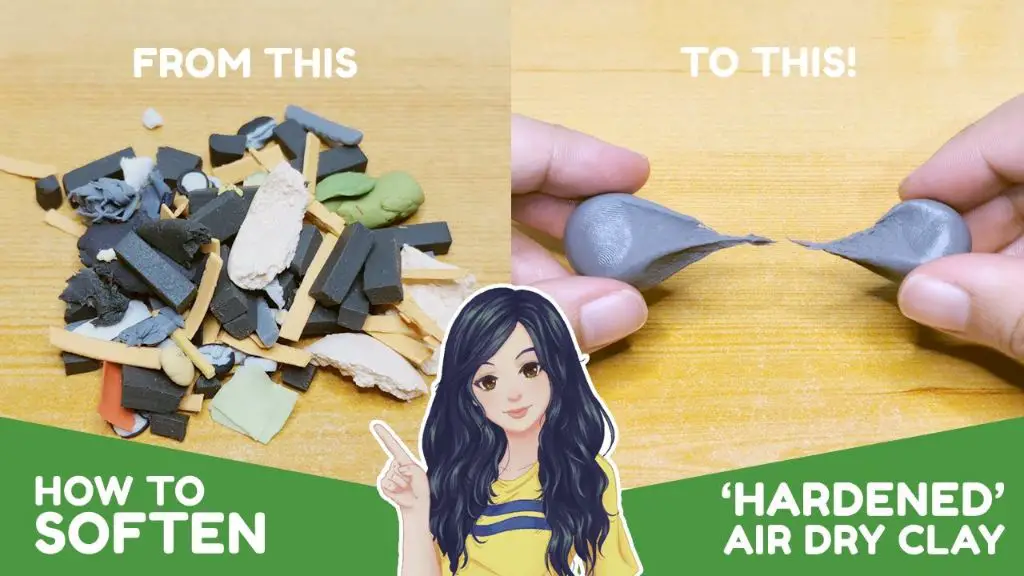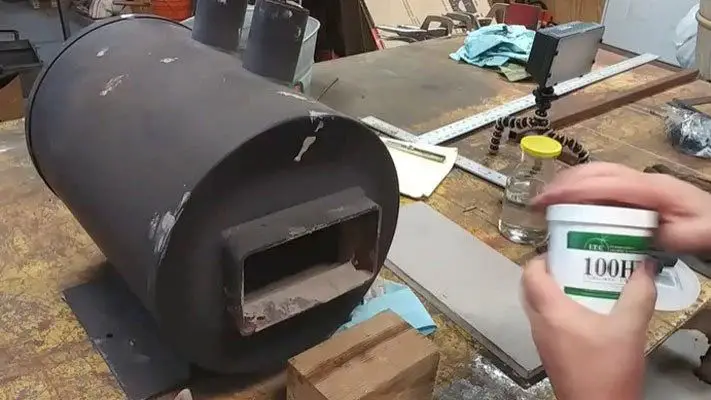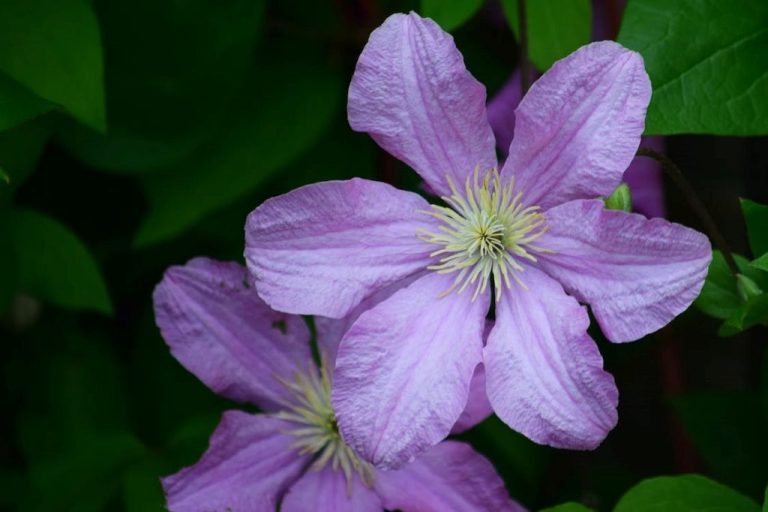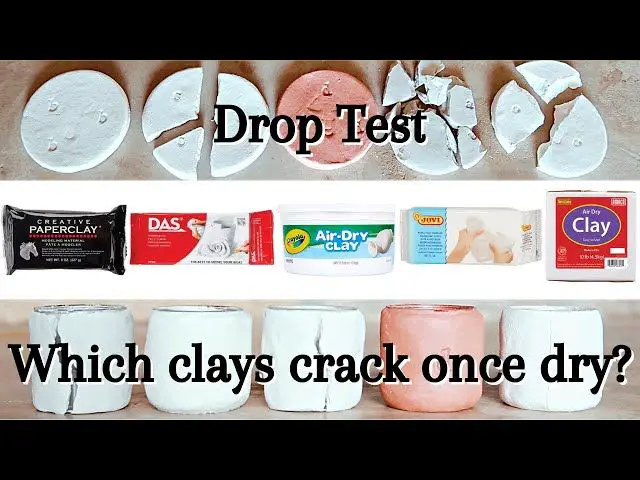Does Air Dry Clay Get Hard?
What is Air Dry Clay?
Air dry clay is a type of modeling clay that cures and hardens through evaporation as the water content in the clay dries up when exposed to air. It is made from a mixture of clays, fillers, and hardeners. The main ingredients in air dry clay are water-based clay, filler materials like chalk or paper pulp, and chemicals like alum or potassium sulphate which help the clay harden.
The key difference between air dry clay and polymer clay is that polymer clay cures through a chemical reaction rather than drying out. Polymer clay contains plasticizers like vinyl that allow it to harden when baked, whereas air dry clay relies solely on drying in the air to cure and does not require baking. Additionally, air dry clay is water-based while polymer clay is plasticine-based. Air dry clay is also more porous and brittle when dry compared to polymer clay.
How Air Dry Clay Dries
Air dry clay dries through evaporation. Water molecules leave the clay and evaporate into the air, causing the clay to harden. This process is called “drying by desiccation”.
The drying time depends on several factors:
- Thickness – Thicker pieces take longer to fully dry and harden.
- Clay composition – Clays with more water content take longer to dry.
- Environment – Warm, dry conditions speed up drying time.
- Surface area – Sculptures with more exposed surface area dry faster.
As the water evaporates, the clay particles move closer together, forming strong bonds that harden the clay. Most air dry clays will dry to “earthenware hardness” within 24 hours in optimal conditions. The chemical composition transforms from malleable to a hardened, durable material over time.
To speed up drying, use a hair dryer on a low, cool setting. Avoid high heat, which can cause cracks. Storing projects in a warm, dry area also reduces drying time. With proper care, air dry clay fully hardens into a strong, finished product.
Does Air Dry Clay Get Hard?
Air dry clay can get very hard as it dries and cures. Most brands will cure to a stage 5 hardness on the Mohs scale according to https://craftyourhappyplace.com/does-air-dry-clay-stay-hard/. This makes air dry clay as hard as glass or iron when fully cured.

The hardness air dry clay reaches depends on the specific brand and clay composition. Premium polymer clays are formulated to get harder than basic air dry clays. But even standard clays will harden to a durable stage 5 Mohs hardness with proper drying time and curing.
Air dry clay can get multiple times harder than clays like polymer clay or ceramic clay that need baking to set. It also achieves greater hardness than homemade salt dough recipes. When cured, air dry clay has a hardness comparable to materials like wood, acrylic, and some plastics or resins.
The hardness makes finished air dry clay pieces very durable for display, decoration, or light functional use. With proper curing time, air dry clay has enough hardness for many applications without needing additional sealing or protective finishes.
Using Air Dry Clay
Air dry clay is commonly used for crafts, modeling, and creating sculptures, pottery, jewelry, and other decorative items. Some of the most popular uses of air dry clay include:
Crafting miniature figurines, animals, food items, holiday ornaments, dollhouse items, and more. Air dry clay is lightweight and easy to sculpt by hand, making it ideal for miniature crafts. A range of textures and fine details can be achieved.
Modeling scenery, trains, vehicles, and other replicas. The clay can be molded and shaped to create intricate recreations. Once dried, it will hold its form well.
Sculpting original 3D artwork, sculptures, wall plaques, bowls, vases, and decorative pieces. From abstract designs to realistic portraits, air dry clay allows artists to create free-standing sculptures.
Making functional pottery like mugs, plates, bowls, and vases. Simple pottery wheels can be used to shape the clay. Food-safe finishes are required for functional pottery.
Crafting jewelry like beads, pendants, earrings, and bracelets. The lightweight clay is easy to cut, shape, and paint for jewelry making. Clear finishes help protect the clay.
Decorating boxes, frames, and other surfaces. Air dry clay can be rolled flat and applied to surfaces for texture. It can also be shaped into embellishments.
The versatility and ease of use make air dry clay one of the most popular modeling and sculpting materials for both children and adults.
Benefits of Air Dry Clay
Air dry clay offers several benefits that make it appealing to artists and crafters. One of the main benefits is that air dry clay is very easy to use. It can be shaped by hand without any special tools or equipment. Unlike clays that require firing in a kiln, air dry clay simply hardens by being exposed to air over time. This makes starting and finishing projects with air dry clay relatively quick and simple.
Another major advantage of air dry clay is that it dries at room temperature. There is no need for the high heat of a kiln to set the clay. As long as the climate is not too humid, air dry clay will stiffen and harden gradually as it sits exposed to the air over a period of 1-7 days depending on the thickness [1]. The ability to dry clay at ambient room temperature makes air dry clays convenient to use in homes, schools, and studios without kiln access.
Finally, air dry clay is praised for being non-toxic. It does not contain chemicals, solvents, or fumes that could pose health hazards. This makes air dry clay a good choice for children’s craft projects and classrooms. The non-toxic composition provides peace of mind to crafters who want to avoid contact with hazardous art materials.
Limitations of Air Dry Clay
While air dry clay is very versatile, it does have some limitations to be aware of. Two main drawbacks are that air dry clay becomes brittle when fully dry and heavy pieces can crack while drying. Air dry clay is also not ideal for painting.
When air dry clay thoroughly dries, it loses its flexibility and becomes brittle. This means pieces made from fully dried air dry clay are prone to cracking or breaking if dropped or handled roughly. The clay needs to maintain a bit of moisture to retain some flexibility. Pieces will be strongest before completely drying.
Large or heavy air dry clay pieces may develop cracks while drying. As the moisture evaporates, stresses are put on the structure. Heavy sculptural pieces have a higher chance of cracking compared to smaller, thinner projects. Letting pieces dry slowly reduces cracking.
Painting air dry clay can be challenging compared to other clays. Acrylic paints work best, but may crack as the clay dries and contracts. Using a sealant like polyurethane can help the paint adhere better. Multiple thin layers of paint work better than thick coats.
While air dry clay has limitations, taking the right precautions when working with it can lead to successful finished pieces. Proper drying times, minimizing excess handling of dry pieces, and painting correctly allows air dry clay’s conveniences to shine through.
Best Practices for Drying
There are several best practices to follow when drying air dry clay to help prevent cracking and achieve optimal results:
Dry the clay flat rather than upright. Laying the clay down flat exposes more surface area and allows moisture to evaporate evenly across the entire piece. Drying upright can lead to sagging or uneven drying.
Rotate the clay periodically while drying. This ensures no one side dries faster than other sides. Turn the clay every 30 minutes or so for the first few hours of drying.
Use armatures for support. Adding armatures made from wire, foil or other materials provides stability and structure so pieces don’t warp or crack while drying. The armature disperses moisture evenly.
Control ambient conditions. Drying clay in a room with low humidity around 50-60% prevents clay from drying too quickly. Increased air circulation from a fan also helps moisture evaporate. Avoid direct sunlight which can dry clay unevenly.
Check on the clay and monitor progress. Pay attention to any cracks forming and repair them immediately with slip. Waiting until completely dry makes cracks harder to fix.
Storing Air Dry Clay
Properly storing your air dry clay is crucial for keeping it fresh and pliable for future use. Here are some tips on storing air dry clay:
- Seal air dry clay in an airtight container or bag for long-term storage. Wrap blocks or partially used clay in plastic wrap or place in a ziplock bag, removing excess air before sealing (Source). This prevents the clay from drying out.
- Refrigerate sealed clay if storing for more than a few weeks. The cold temperature helps slow drying and keeps clay soft (Source). Let refrigerated clay return to room temperature before opening to prevent condensation.
- Store clay in a cool, dry place away from direct sunlight and heat sources. Excessive warmth can cause clay to dry out faster (Source).
- Check regularly for drying and re-seal containers. If condensation forms, dry with paper towel before resealing.
Following proper storage methods allows you to keep air dry clay fresh for months, preventing the need to prematurely discard dried out clay.
Finishing Air Dry Clay
Once your air dry clay sculpture is fully dried, there are several finishing techniques you can use to smooth, paint, glaze, or seal your creation.
Sanding is an important first step before painting or sealing. Lightly sand the entire surface with fine grit sandpaper to smooth any rough edges or bumps. This will prep the surface for better paint adhesion. You can also use small files or sanding sticks to reach into detailed areas.According to Gathering Beauty, sanding lightly with 400 grit sandpaper is recommended before painting.
There are many paint options for air dry clay including acrylic, oil, and watercolor paints. Acrylic paints work especially well and will fully adhere once dry. You can also use chalk pastels, artist markers, pencils, or inks to color your clay. Avoid using plain water to thin acrylic paints, instead opt for an acrylic medium or glaze. Apply paint in thin layers, allowing each coat to fully dry before adding another layer.
Glazing can provide additional protection and a glossy surface. Common glaze options are polymer clay glazes, non-toxic acrylic sealer, polyurethane, and polyacrylic. According to one source Gathering Beauty, either a clear polyurethane varnish or acrylic sealer works well to add protection and shine. Apply glazes in 2-3 thin coats allowing proper drying between coats.
Once painting is complete, seal the surface with a protective acrylic sealer, polyurethane, or varnish. This prevents paint damage and creates a durable, water-resistant finish. Apply 2-3 thin coats with proper drying time between coats. Allow the piece to cure for 24-48 hours before use or display.
FAQs
Here are some of the most frequently asked questions about air dry clay:
How long does air dry clay take to dry?
Air dry clay typically takes 24-48 hours to completely dry. Thinner pieces may dry faster, while thicker pieces can take 72 hours or longer to fully cure. Make sure to allow adequate drying time before painting or handling finished pieces.
Can you bake air dry clay?
No, air dry clay should never be baked as high temperatures can cause it to melt or burn. Air dry clay hardens naturally through evaporation and should be left to dry fully at room temperature. [1]
How can I prevent cracking while drying?
To avoid cracking, dry air dry clay slowly and evenly. Place pieces in an area with good air circulation but away from direct heat or sunlight. Consider loosely wrapping projects in plastic wrap while drying to retain moisture. Also avoid making pieces too thin or hollow, which are prone to cracking.
How do I get a smooth finish?
For a smooth surface, work the clay until there are no visible seam lines or fingerprints. Use plastic wrap to smooth cracks and imperfections. Lightly sand dried pieces with fine grit sandpaper before painting for the best results.
Can I store unused clay for later?
Wrap unused clay tightly in plastic wrap or store in an airtight plastic bag or container. Unused clay can be stored for 6-12 months before drying out. For best results, re-condition old clay by kneading in a bit of water before use.




